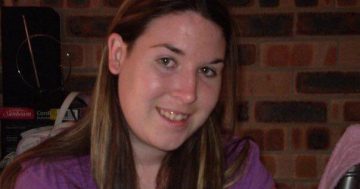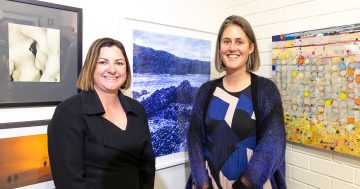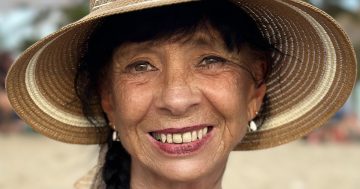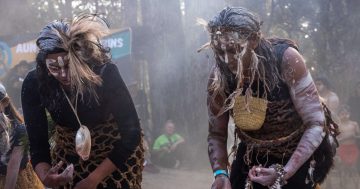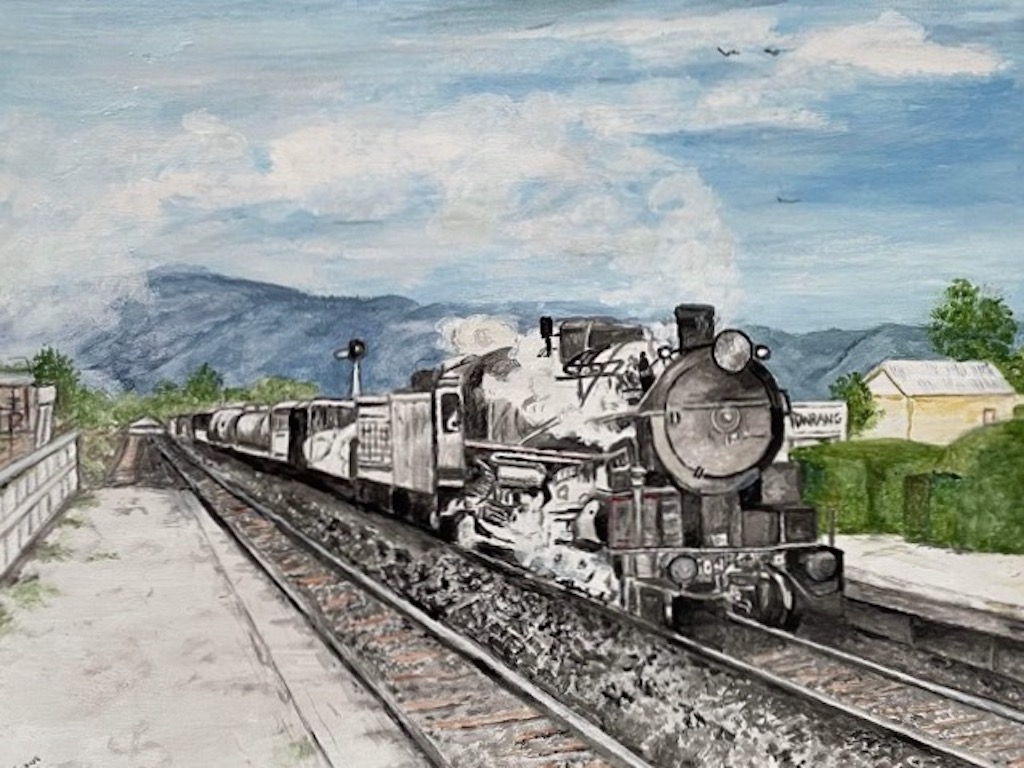
A steam train at Towrang Station. Joan Evans created the painting from a photo in the book, Back to Towrang. Photo: Supplied.
At Towrang village east of Goulburn life rolls on around the swollen Wollondilly River, the hurrying trains and happy gatherings in the corrugated-iron community hall. For five decades Joan Evans has captured all three in her prize-winning paintings.
At 92 Joan believes her art helps maintain her wellbeing. She joins a group of women each Tuesday morning in the hall to knit and yarn and devours gripping murder mysteries in Mills & Boon books. Twelve new books arrive in the mail each month hardly touching the sides of her appetite for reading.
“I will be 93 in a fortnight. I think it’s the fact you are not just sitting doing nothing, I knit and I paint, it keeps me occupied,” she said. “I read a heck of a lot of books.”
In her younger days Joan spent many years at Watt Telfer’s photographic studio in Auburn Street, Goulburn, painstakingly progressing her artistic skills.
“They turned their black and white photos sepia and I would colour the bridal parties and portraits,” Joan said. “That gave me the grounding for painting, how to blend your colours, that sort of works in your paintings as well.”
Two marriages followed, and with her family she moved from Goulburn to Towrang where her second husband Ray Evans bought land to pursue his interest in harness driving horses.
Life along the meandering river and countryside inspired prolific painting. When she spotted a photograph of a hissing steam train arriving in Towrang she couldn’t resist copying it in a painting.
“Gloria Jones and Beryl Mills had the photo in their Back to Towrang book,” she said. “Children caught that train to school in Goulburn.”
Joan’s painting is familiar to anyone who has been to the Towrang Hall, where it has hung for many years. Much of her work, which includes the mine at Marulan South in a collage of other prominent landmarks, can be found in homes and public places throughout the Towrang and Marulan districts.

Joan prizes her picture blocks which show six country scenes. Photo: John Thistleton.
Her delicate brushwork is evident in her picture blocks work. Son-in-law Rick Jones cut a piece of timber into 12 tiny blocks for her. On each of the six sides of the block, Joan has painted a different scene, copied from a series of six small prints. Turning over each block reveals a section of a new scene.
People have commissioned her to paint family keepsakes to reflect their way of life. On a set of shears once used for shearing she painted a mob of sheep being mustered into yards on one blade, and a shearer using long blades on the other. On a milk can, she painted horses in the countryside.
“Most of the people who wanted those sort of things were elderly, or younger ones who had something that belonged to their father,” she said.
For another commission a family’s photos recording their son’s early life, from his little rocking horse as a boy to riding in country shows in later life, are all painted in sequence on a two-man crosscut saw.
“They have all those memories in the one place,” Joan said.
She paints in either oil or acrylic, working for a few hours at a time. Then she sets it aside and returns a few days later.
“It probably takes me a couple of weeks to finish a painting,” she said.
She is self-taught.
“It’s just a case of you make a mistake, you learn to fix it,” she said. “At my age at the moment, things are starting to deteriorate,” she said.

Joan Evans with one of her works recording progress on a new bridge over the Wollondilly River. Photo: John Thistleton.
She has completed a painting to coincide with the recent opening of Towrang’s new bridge.
“The river came up level to the old bridge but it didn’t run over it and my painting has the stormy clouds, the water run-off and water in the river up to the old bridge,” she said. “Then I’ve got the new bridge which shows you the difference in the height with the old bridge. I will give it to the hall committee, they can keep it if they like.”
To mark the bridge’s completion and recent opening Joan had the honour of being first across in a vintage car, while village residents applauded their local living treasure.







